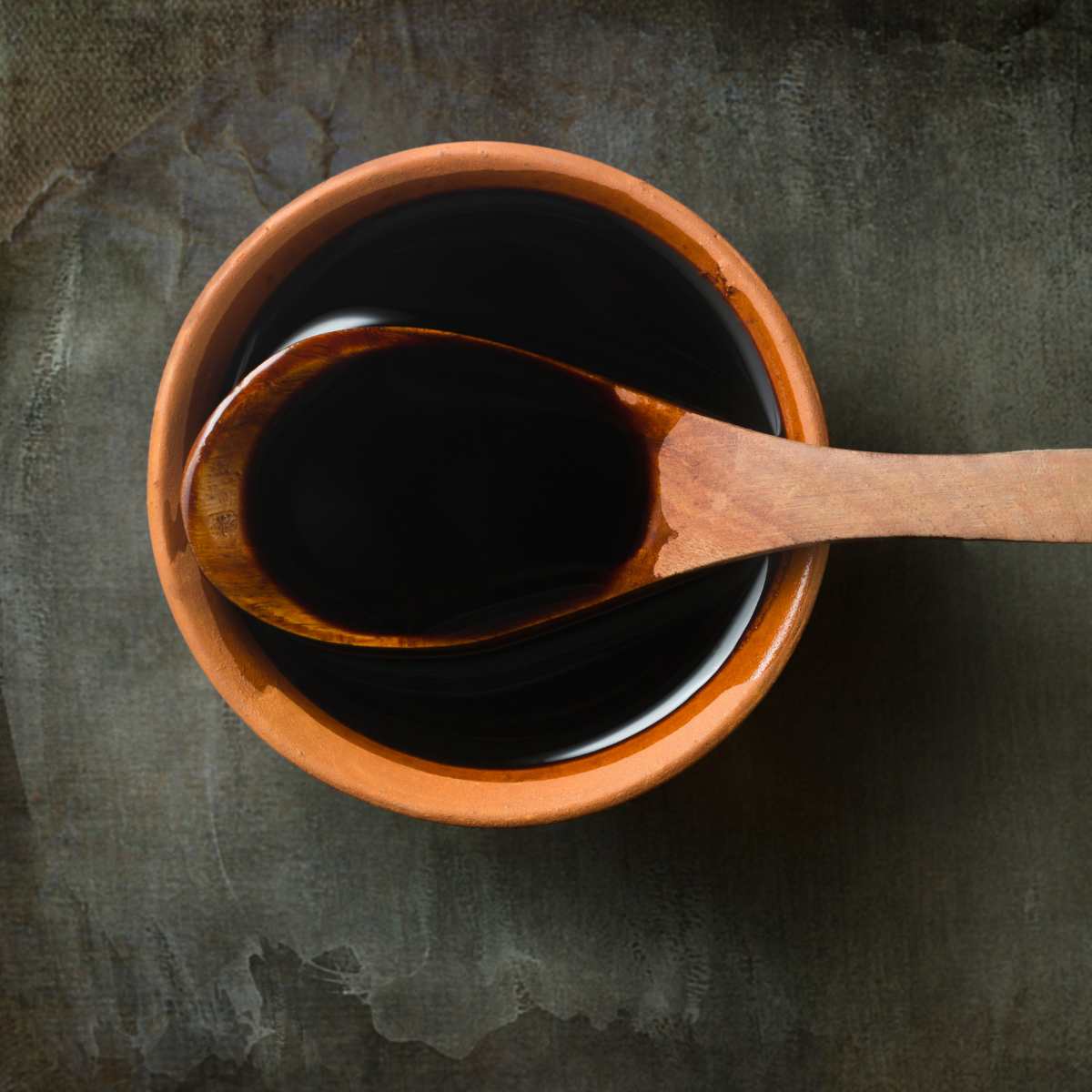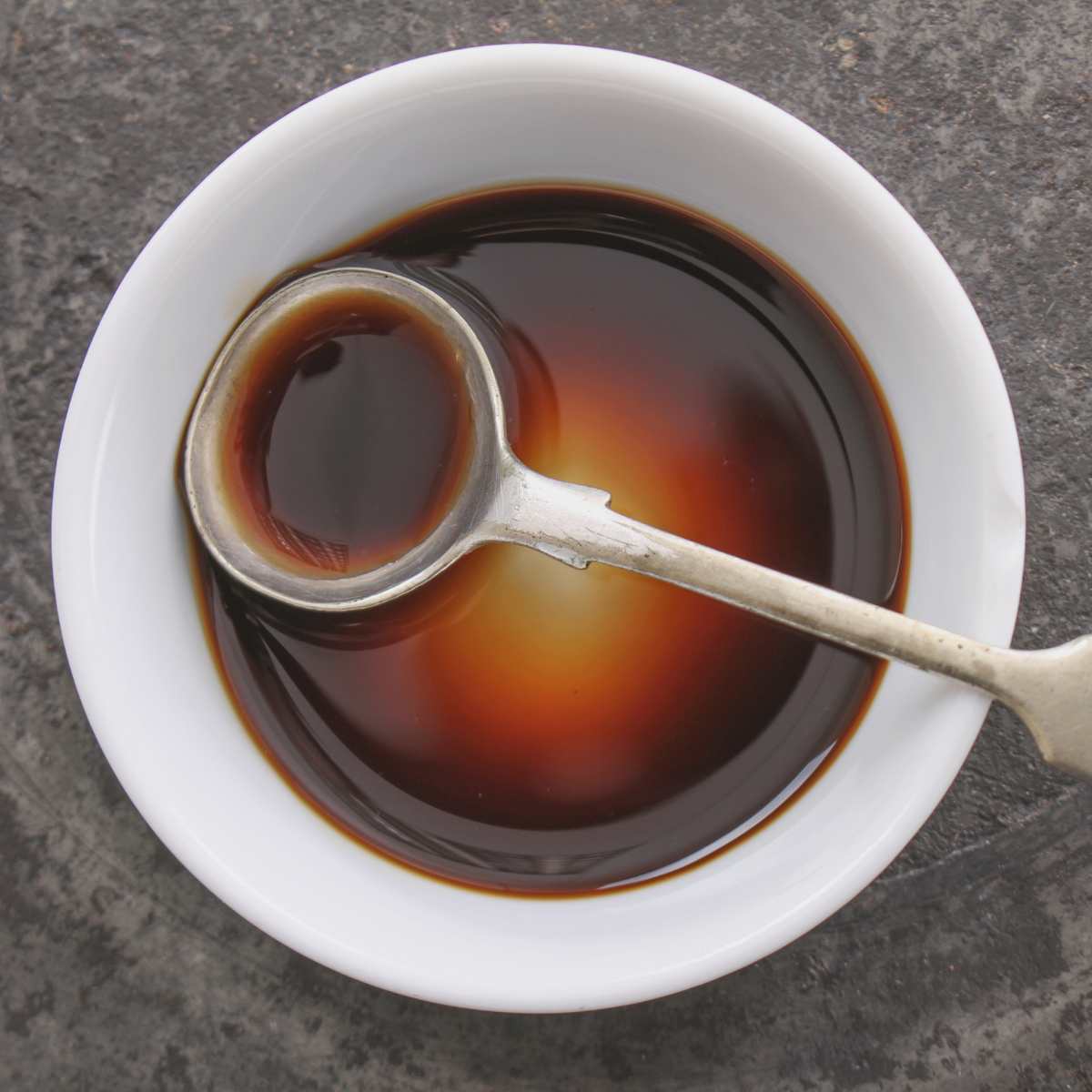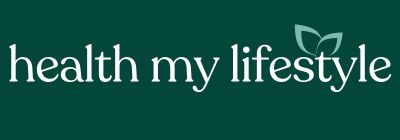Need a coconut aminos substitute? You’ve come to the right place! Read on to learn about what it is, where to buy it, and best substitutes if you need a fast replacement!
This post may contain affiliate links. Read my policy page for more information.

While coconut aminos are a popular choice for many, there are several reasons why you might be on the lookout for a substitute. Whether you’re following a specific dietary plan, have allergies or sensitivities, or simply want to explore new flavors, having alternatives to coconut aminos allows you to expand your culinary horizons.
From gluten-free options to unique taste profiles, these substitutes offer a wide range of possibilities to enhance your favorite dishes. So, let’s dive into the exciting world of coconut aminos substitutes and discover the perfect match for your taste buds!
Jump to:
What are coconut aminos?
Coconut aminos are often used as a gluten-free and soy-free alternative to soy sauce. It’s made from coconut sap but the final result is a very similar flavor to traditional soy sauce.
Coconut aminos, or coco aminos, is a flavorful and versatile condiment that’s taking the culinary world by storm. Made from the sap of coconut blossoms, it undergoes a process of natural fermentation to create a savory and slightly sweet liquid.
Imagine this: skilled harvesters gently tap into the delicate blossoms of coconut trees, collecting the sap that flows like a hidden treasure. This precious sap is then carefully blended with sea salt and left to ferment, allowing the magic to happen. During fermentation, enzymes work their enchantment, breaking down the natural sugars and transforming them into a rich symphony of flavors.
The result? A velvety amber liquid with a taste that dances on your palate. Coconut aminos boast a unique combination of umami goodness, subtle sweetness, and a touch of saltiness.

How to use coconut aminos
This versatile elixir adds depth and complexity to a wide range of dishes. It shines as a marinade, infusing proteins and vegetables with its tantalizing essence. Just pour a generous splash of coconut aminos over your protein of choice like this crispy tofu or savory tempeh, let it soak up the flavors for a while, and prepare for a taste sensation like no other.
Coconut aminos are also a trusty companion in stir-fries, and it’s perfect for drizzling over roasted vegetables. Want to take your salad dressings to the next level? A dash of coconut aminos can elevate even the simplest of dressings. Oh, and did we mention its magic as a dipping sauce? Whether you’re fond of sushi, spring rolls, or crispy potstickers, coconut aminos steps up to the plate, ready to enhance each bite.

Do coconut aminos taste like coconuts?
Being made from coconut tree sap, you may think that it must have a distinctly coconut-y flavor. However, coconut aminos doesn’t actually taste anything at all like coconuts. In fact, it has a salty flavor and consistency reminiscent of soy sauce. This liquid condiment is a good option for those seeking a savory sauce for dipping or a soy-free seasoning sauce that can be used in a variety of dishes.
Coconut aminos benefits
Coconut aminos are little bottles of goodness that bring a whole bunch of benefits not only to your taste buds but also to your well-being.
They’re allergy-friendly, so you can dive into flavor town without worrying about soy, gluten, or wheat. Plus, their low glycemic index won’t send your blood sugar on a rollercoaster ride. Talk about a win-win for your taste buds and health!
These tropical superheroes are bursting with essential amino acids, vitamins, and minerals. They’re like a nutrient-packed punch to support your overall awesomeness. And guess what? They’re naturally fermented, which means they’re good for your digestion and gut health too.
Coconut aminos bring a rich umami goodness and savory flavor that’s like a party in your mouth. They work wonders in all sorts of recipes – marinades, stir-fries, dressings, you name it! They’re versatile enough to rock your Asian cuisine-inspired dishes, make your salads sing, and turn roasted veggies into taste explosions. Dip, drizzle, or pour, coconut aminos are here to make your meals a flavor fiesta!
These little sauce champions are low in sodium, so you can savor the flavors without feeling like a thirsty camel. Plus, they’re made with simple, clean ingredients—no artificial stuff here. It’s like having a culinary sidekick that’s got your back, keeping things natural and tasty.
Where can you buy coconut aminos?
Coconut aminos can be found in various places, making it easy for you to get your hands on this sauce. Here are some common options for purchasing coconut aminos:
- Local Grocery Stores: Check the condiment aisle of your nearby grocery store. Many well-stocked supermarkets carry coconut aminos, usually alongside other soy sauces or specialty sauces.
- Health Food Stores: Pay a visit to your local health food store or natural foods market. These stores often have a dedicated section for specialty and alternative condiments, where you can find coconut aminos.
- Online Retailers: Explore the vast realm of online shopping. Major e-commerce platforms, such as Amazon, often offer a wide selection of coconut aminos from various brands. You can conveniently browse different options, compare prices, and have them delivered to your doorstep.
- Asian Markets: If you have access to an Asian market or specialty store, they are likely to stock coconut aminos. These markets often carry a diverse range of sauces and condiments from different Asian cuisines.
- Local Health Food Co-ops: Check out local health food co-operatives or farmer’s markets in your area. These community-focused establishments often support small-scale producers and carry unique, health-conscious products like coconut aminos.
Remember, availability may vary depending on your location. If you’re unsure where to find coconut aminos near you, don’t hesitate to reach out to your local grocery store or specialty food retailers and inquire about their product selection. With a little bit of exploration and a dash of curiosity, you’ll soon have a bottle of coconut aminos ready to add a tropical twist to your culinary creations!
Best Coconut aminos substitutes
When all else fails, there are luckily several options for replacing coconut aminos. Here are the eleven best substitutes for coconut aminos, why they work, and how to use them:
Tamari
Tamari, a gluten-free soy sauce, is a fantastic substitute for coconut aminos. It shares a similar savory umami flavor profile and can be used in equal amounts as a replacement. Use tamari in marinades, stir-fries, sauces, and dressings to add depth and richness to your dishes.

Soy Sauce
The classic regular soy sauce is a readily available substitute for coconut aminos. It’s salty and savory notes make it a versatile choice and popular ingredient. If you’re looking for something with less sodium opt for low-sodium soy sauce if desired. Use soy sauce in stir-fries, marinades, dipping sauces, and even as a table condiment.

Liquid Aminos
Liquid aminos, derived from soybeans, is another great alternative for coconut aminos. It offers a similar taste and can be used as a one-to-one replacement. Add liquid aminos to stir-fries, noodles, and rice dishes for a delightful burst of savory flavor. Bragg’s Liquid Aminos is one of the most common brands of liquid aminos and can be found near the soy sauce in most grocery stores.
Teriyaki Sauce
Teriyaki sauce brings a delightful combination of sweet and savory flavors to the table. It can be used as a replacement for coconut aminos, especially in recipes where a touch of sweetness is desired. Brush teriyaki sauce on grilled proteins, use it as a marinade or drizzle it over roasted veggies.

Soyaki Sauce
Soyaki sauce, a combination of soy sauce, ginger, garlic, and a touch of sweetness with maple syrup, is an excellent substitute for coconut aminos. It brings a dynamic flavor to marinades, glazes, and stir-fries. Use Soyaki sauce as a replacement and enjoy its balanced and flavorful profile. Try the easy Soyaki recipe below!

Worcestershire Sauce
Worcestershire sauce may not be an obvious choice, but its tangy and savory taste can work wonders as a substitute. Use it in smaller amounts than coconut aminos due to its strong flavor. For every teaspoon of coconut aminos use 1/2 teaspoon of Worcestershire sauce. Add Worcestershire sauce to stews, soups, and sauces to give them a rich, umami kick.

Vegan Fish Sauce
Fish sauce, commonly used in Southeast Asian cuisine, adds a unique umami flavor to dishes. It works well as a substitute for coconut aminos in recipes that benefit from a distinctive taste. Use fish sauce sparingly, as it has a strong aroma. This vegan fish sauce is a good substitute, incorporate it into curries, stir-fries, and noodle dishes for an authentic touch.

Vegan Oyster Sauce
Oyster sauce, often found in Chinese cooking, offers a rich and savory flavor that can stand in for coconut aminos. It works particularly well in stir-fries and glazes. Use this vegan oyster sauce as a replacement in your favorite recipes, such as beef and broccoli stir-fry or garlic noodles.

Miso Paste
Miso paste brings a complex and earthy flavor to dishes, making it a versatile substitute for coconut aminos. Use it in smaller amounts and adjust seasoning to taste. Add miso paste to soups, dressings, and marinades to infuse them with a savory and slightly sweet character.

Balsamic Vinegar
Balsamic vinegar, with its sweet and tangy profile, can provide a unique flavor when used as a substitute. Use it in smaller quantities, as it has a distinct taste. Drizzle balsamic vinegar over salads, roasted vegetables, and grilled proteins to enhance their flavors. This is an excellent soy-free and gluten-free alternative for those with dietary restrictions.

Dried Shiitake Mushrooms
Dried shiitake mushrooms, when rehydrated and used as a substitute for coconut aminos, provide a unique umami boost. It makes an excellent healthier alternative that pairs well with savory dishes and aids a thicker consistency. Finely chop or grind the mushrooms into a powder and use it as a seasoning in sauces, marinades, or soups.
Summary
When using these substitutes, it’s important to taste as you go and adjust the amounts according to your preference. Feel free to experiment and have fun discovering new flavor combinations that suit your culinary creations.
Want to Save This Recipe?
Enter your email below and we’ll send it straight to your inbox! Plus, get weekly free recipes!
By submitting this form, you consent to receive emails from Health My Lifestyle.

Soyaki Sauce (Easy Coconut Aminos Substitute)
Ingredients
- ½ cup low-sodium soy sauce or tamari for gluten-free option
- 3 tablespoons pineapple juice
- 2 tablespoons maple syrup or agave nectar
- 2 tablespoons rice vinegar
- 1 tablespoon sesame oil
- 2 cloves garlic minced
- 1 teaspoon ginger grated
- ½ teaspoon onion powder
- 1 teaspoon sesame seeds
- 1 tablespoon cornstarch optional, for thickening
Instructions
- In a small sauce pan over medium heat, combine soy sauce (or tamari), pineapple juice, maple syrup (or agave nectar), rice vinegar, sesame oil, minced garlic, grated ginger, and onion powder. Whisk all the ingredients together until well combined and bring to a simmer.½ cup low-sodium soy sauce, 3 tablespoons pineapple juice, 2 tablespoons maple syrup, 2 tablespoons rice vinegar, 1 tablespoon sesame oil, 2 cloves garlic, 1 teaspoon ginger, ½ teaspoon onion powder
- Mix the cornstarch with 1 tablespoon of cold water until dissolved, then stir it into the soyaki sauce. Allow the sauce to simmer until thickened for 3-5 minutes.1 tablespoon cornstarch
- Stir in the sesame seeds and taste the sauce and adjust the flavors according to your preference. If you prefer it sweeter, add a bit more maple syrup or agave nectar. If you prefer it tangier, add more rice vinegar. Adjust the amounts of ginger and garlic to suit your taste as well.1 teaspoon sesame seeds
- You can use this homemade Soyaki sauce as a marinade for tofu, tempeh, or vegetables before grilling, baking, or stir-frying. It also works well as a glaze for roasted vegetables or a flavorful dressing for salads and bowls.







Thank you! I had no idea what to use in place for coconut aminos! I decided rather than follow the recipe I was gonna make i made your soyaki sauce and it was so flavorful! So glad I stumbled across it!